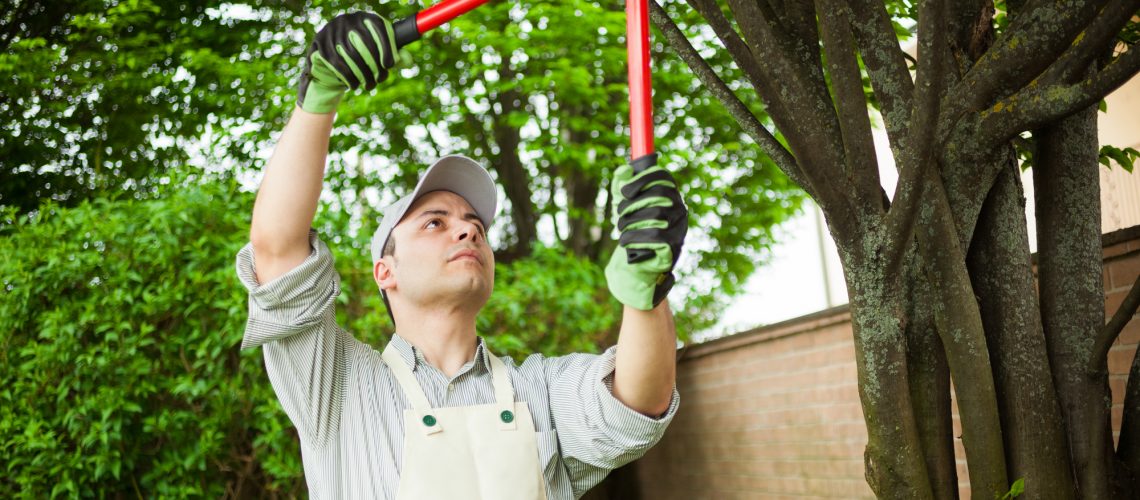What is pruning? If you have got trees in your landscape design, you should know what it is, and how/when to do it. Either that or you can just give Spring Falls Landscaping a call and we’ll take care of it for you.
Pruning and weeding are both an essential part of landscape maintenance. We offer a few different options for you in both areas.
- Weeding is available weekly, monthly or twice in a season. Weeds are extremely pesky and grow fast so most of our clients prefer the weekly weeding option.
- Pruning is available one time a season, twice a season, or every month during a season.
If you are interested in our weeding or pruning services, you can get a free consultation. If you prefer to try pruning on your own, here are some tips that may help.
Pruning Tips For Your Landscape Design
Pruning a tree is the process of removing some specifically selected branches. Do this properly and it will benefit the whole tree.
Why Should You Prune?
There are a few reasons that your trees need to be pruned — health, safety, and growth are the main ones.
For the health of your trees you should:
- Remove dead branches and those that are diseased. Doing this will help prevent unwanted insects from taking over the tree.
- If the tree has a thick canopy, you should thin it out. This will allow the tree to have increased access to the air and sunlight that it needs. This should lessen the chances of it getting a disease.
- Suckers and water sprouts steal food and water from the established parts of the tree. Get rid of them.
- It is best not to have branches that cross and rub against each other. Prune to eliminate these situations.
- As your tree gets older it may develop crotches that need to be removed to prevent the breaking of the wood.
Pruning your trees in the correct manner will help your trees stay strong and reduce any safety hazards such as branches growing too low and branches that may be susceptible to storm damage.
You can help your trees maintain their natural-looking form by pruning the branches that aren’t growing in the same manner as the rest of the tree.
When Should You Prune?
The rule of thumb for pruning the dead and diseased branches is to remove them as soon as you can. For the best result for your landscape design, in general, the best time for pruning is late in the fall, early in the spring, or right before your trees begin to open buds. Really, you can prune at any time. But, we recommend avoiding it during the hot and dry season and the freezing winter temperatures.
How Should You Prune?
Your first step should be to examine the tree and figure out what needs to be pruned and what tools you will need to perform the pruning job. Bypass pruners and bypass loppers do a good job because they produce a clean cut. There is a right and wrong way to execute a pruning job. Two things you want to avoid are flush cuts and leaving a stub on the tree. If you do either of these, you create a wound in the tree that will likely rot.
When you remove a branch from the trunk of the tree, you will need to know where the branch collar and bark ridge are.
A branch collar is the often visible swelling in a woody plant that forms at the base of a branch where it is attached to its parent branch or to the tree’s trunk. The top of the branch collar consists of dense interlocking wood grain, which provides mechanical support to the branch attachment. The bark ridge is a raised area of bark at the point where the branch attaches to the trunk. Make sure that you avoid cutting these parts of the tree. It is also a good idea to use multiple cuts when you are pruning a big and heavy branch. One more tip — do not use tree paint or wound dressing on the cuts you have made.
Spring Falls Landscaping
At Spring Falls Landscaping, our landscape design team will help you create a visually pleasing landscape that you’ll be proud of. And we can also help you maintain it — this includes pruning. Contact us today to get your pruning plan scheduled!

